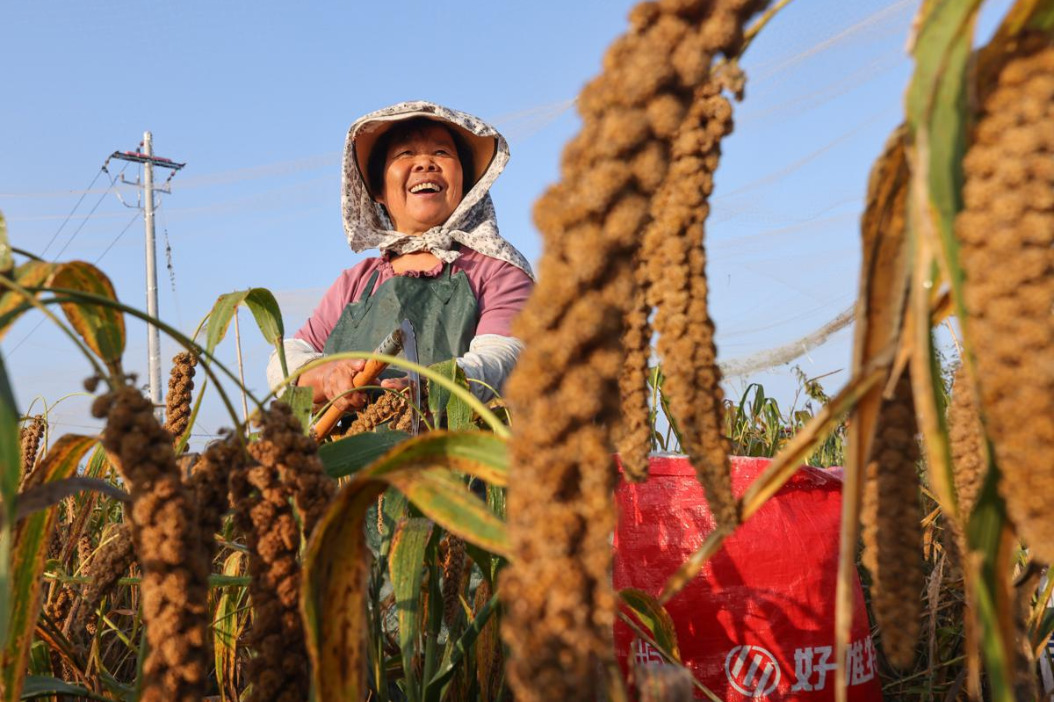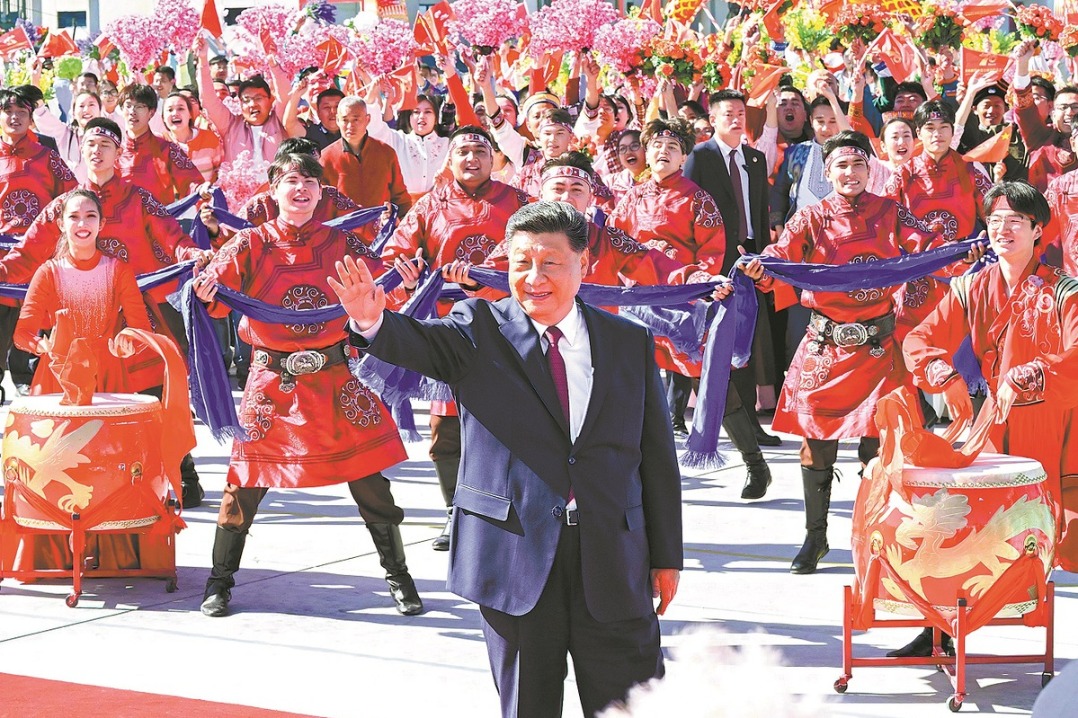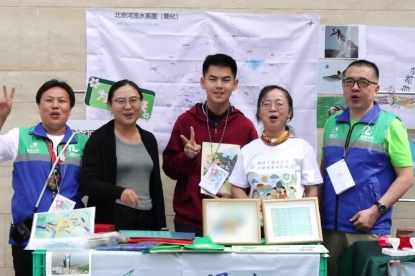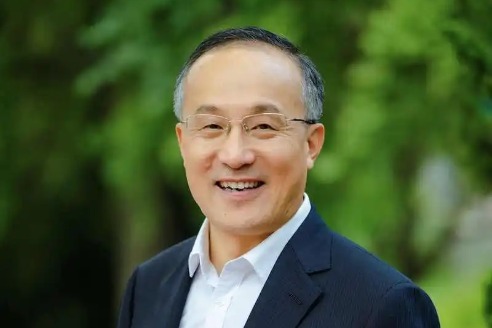Measures to help nation get back on growth track


China has unveiled a range of measures including an aid package to speed up the economic recovery from the coronavirus outbreak, as it seeks to tackle the crisis and challenges resulting from the global COVID-19 pandemic.
President Xi Jinping, who is also general secretary of the Communist Party of China Central Committee and chairman of the Central Military Commission, presided over a number of key leadership meetings in the past two months that decided on periodic and targeted tax cuts and fee reductions for businesses as part of measures to coordinate epidemic containment and socioeconomic development.
During a videoconference on Feb 23 in which officials across the nation participated, Xi called for the enforcement of a region-specific and tiered policy to enable businesses to resume operations, saying that the economy and society is a dynamic system that cannot endure a standstill for long.
In late March, Xi paid a four-day visit to Zhejiang province, a manufacturing hub and China's leading powerhouse in foreign trade, to hear opinions from businesses and give instructions on helping businesses get back to work.
During the visit, he underlined the importance of turning the crisis into opportunities and fostering new growth engines amid the pandemic and pledged to continue to refine the mix of policies aimed to help businesses in line with the development of the situation.
Xi's latest commitment to accelerate the recovery of social and economic operations was made on Wednesday at a meeting of the Standing Committee of the Political Bureau of the CPC Central Committee.
He noted that with the continuous spread of the pandemic globally and its huge impact on the world economy, China now faces fresh difficulties and challenges in its recovery and socioeconomic development.
The meeting decided to employ every available means to create an enabling environment for resuming business operations, including stronger support to hard-hit sectors and small and medium-sized enterprises and heightened steps to expand domestic demand.
According to the National Bureau of Statistics, China's manufacturing purchasing managers' index increased to 52 in March, up from 35.7 in February. The nonmanufacturing business activities index stood at 52.3, compared with 29.6 in February.
A PMI reading of 50 or above indicates expansion in the manufacturing sector.
Zhao Qinghe, a spokesman for the NBS, urged cautious optimism as a single month's PMI reading is not enough to show an across-the-board recovery.
However, the reading does show sustained positive momentum in China's epidemic containment and an accelerated pace in the resumption of work and production among businesses, he said.
As of late March, 98.6 percent of large-scale businesses in China were back at work, with 89.9 percent of employees returning to the jobs, according to the Ministry of Industry and Information Technology. Over 76 percent of small and medium-sized enterprises have resumed operations, the ministry added.
Hu Haihua, vice-president of Weichai Power Co, a leading Chinese powertrain producer in Shandong province, said over 90 percent of the company's supply chain has resumed production, with over 300 of the company's suppliers now back to full operations, he said.
The company also managed to sustain double-digit growth in its exports in the first quarter, even though this could prove difficult in the coming months as the spread of the pandemic accelerates globally.
Meanwhile, the mix of policies rolled out by the central government and local authorities, including periodic cuts or waivers in social insurance contributions for businesses and the cost of electricity, have significantly lowered corporate burdens, he said.
Other than larger businesses, the State Council has prioritized financial support to SMEs, which are more vulnerable due to their weak financial capacities.
The People's Bank of China has also allocated a 300 billion yuan ($42.5 billion) special re-lending quota, half of which went to SMEs and micro businesses. Meanwhile, a 500 billion yuan re-lending and re-discount quota is helping an increasing number of micro, small and medium-sized firms to get loans at rates below 4.55 percent to help them resume business.
The central bank has cut the amount of cash that banks must set aside as reserves three times this year, releasing 1.75 trillion yuan in liquidity to support the economy.
Ma Gaodong, vice-president of Hangzhou Kaite Electrical Appliance, a producer of power strips, sockets and plugs, said the company has seen its corporate costs cut by 2 percent thanks to the government's measures.
The company, whose clients includes US retailers such as Walmart and Costco, has so far seen 20 percent to 30 percent of its export orders either delayed or canceled by its clients overseas.
However, Ma said Xi's inspection trip to Zhejiang province has inspired the company to take greater initiative to explore overseas market opportunities.
"The global pandemic has again brought to light the cutting-edge competitiveness of made-in-China products, which have competitive prices and good quality," he said.
He added that the company is now looking to add a production line for face masks to cater to the surging global demand.
Yu Miaojie, a professor of international trade and the Chinese economy at Peking University's National School of Development, said that although the pandemic could strike a blow in the short term, there are still more opportunities than challenges for the Chinese economy.
"It (the pandemic) will only reinforce China's role as a powerhouse of the global economy, instead of weakening it. That is because China, as the world's factory, is still in the core position of the global value chain," he said.
China's proactive steps toward the resumption of work and production can also lead the world out of the downturn as it can power the growth of countries that export raw materials and key components of products while providing cheaper products for the world, he explained.
The targeted measures adopted by central and local authorities to promote the resumption of work have so far proved effective, he added.
Liu Yuanchun, an economics professor and vice-president of Renmin University of China, said despite various indicators showing that China has made progress on the resumption of business activities, the economy has not fully recovered.
In addition to restoring supply through administrative measures, it is even more important to restore market demand and factory orders, he added.
- China increases basic pensions by another 2%
- Traditional medicine has key role in global scenario, SCO forum stresses
- China concludes 15th Arctic Ocean scientific expedition
- Global peace-loving representatives attend conference in Beijing
- Beidou technology revolutionizes daily life applications
- Former Shandong official given death sentence for taking bribes




































